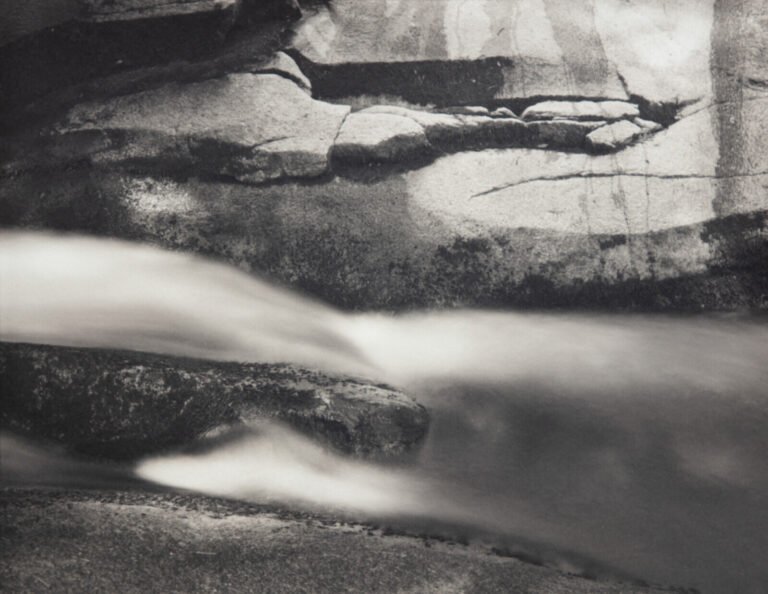Time is a critical element of photography. From exposure to development to printing, each step in the process is defined by time. At each step time is taken to allow the chemical and physical processes to create the final image. Nick Ellison has chosen to have an element of water in each photograph as a way to depict the passing of time to draw attention to change that is often overlooked. He is trying to narrow the gaze, to focus in on these particulars, on how time changes our view of the environment, because it’s happening incrementally, and we often don’t have the time to notice. But if you pause, as a photograph asks you to do, you can see that the force and power of the water, just like time, offers change.
These images are hand made prints using the palladium printing process and are known as palladiotypes. This process dates back to the early days of photography in the 19th century. To create the print, a sheet of cotton rag paper is sensitized by hand coating a mixture of ferric and palladium salts onto its surface. When the coated paper has dried, the paper and a negative is sandwiched in a frame and exposed to ultraviolet light. When the exposure is complete, the print must then be developed to complete the chemical reaction necessary to convert the palladium salts to palladium metal which forms the image. Since this process requires the use of ultraviolet light, enlarging is not possible, and large format negatives must be used. While it is possible to create negatives using digital methods, Ellison only use large format film negatives as a way to stay true to this historical process and to create a deeper connection to his subjects without electronic intervention.






